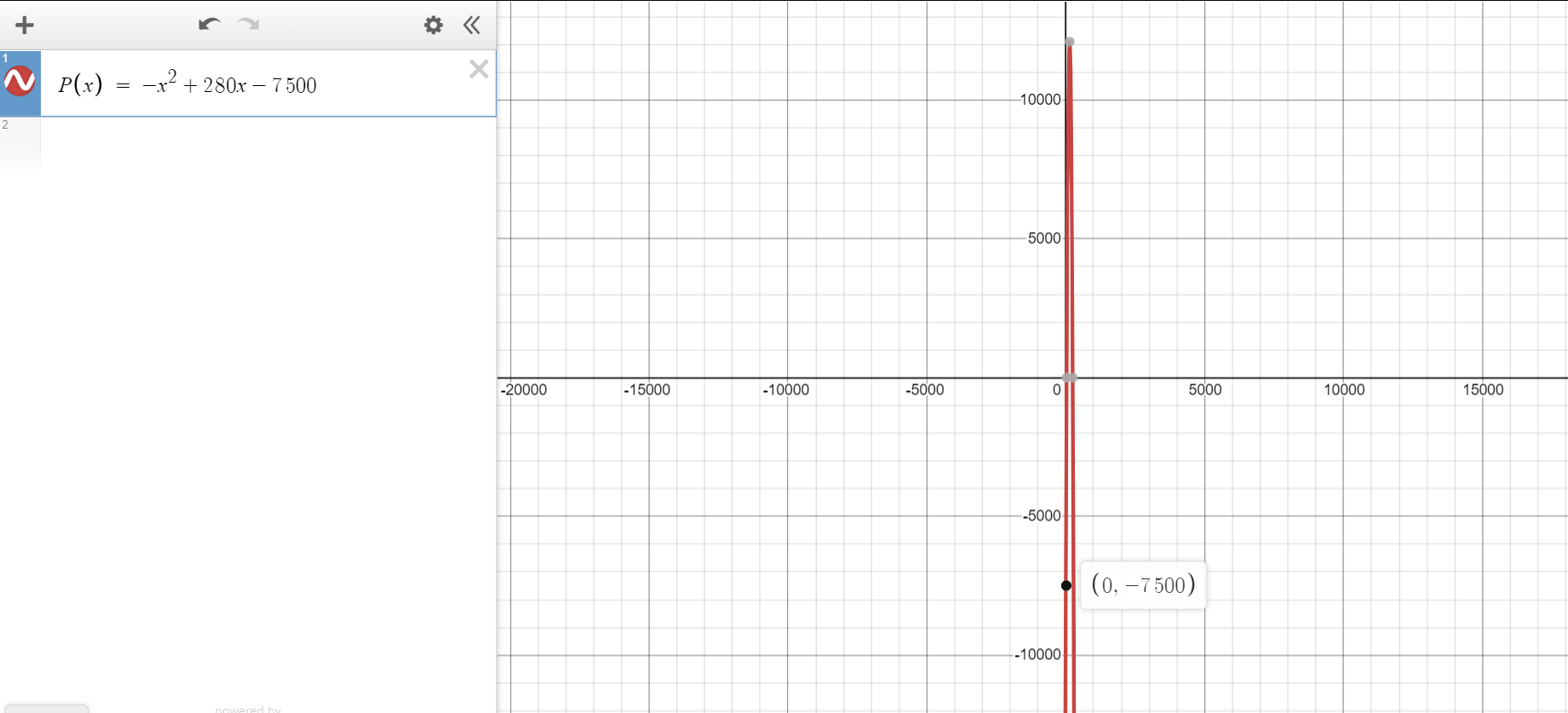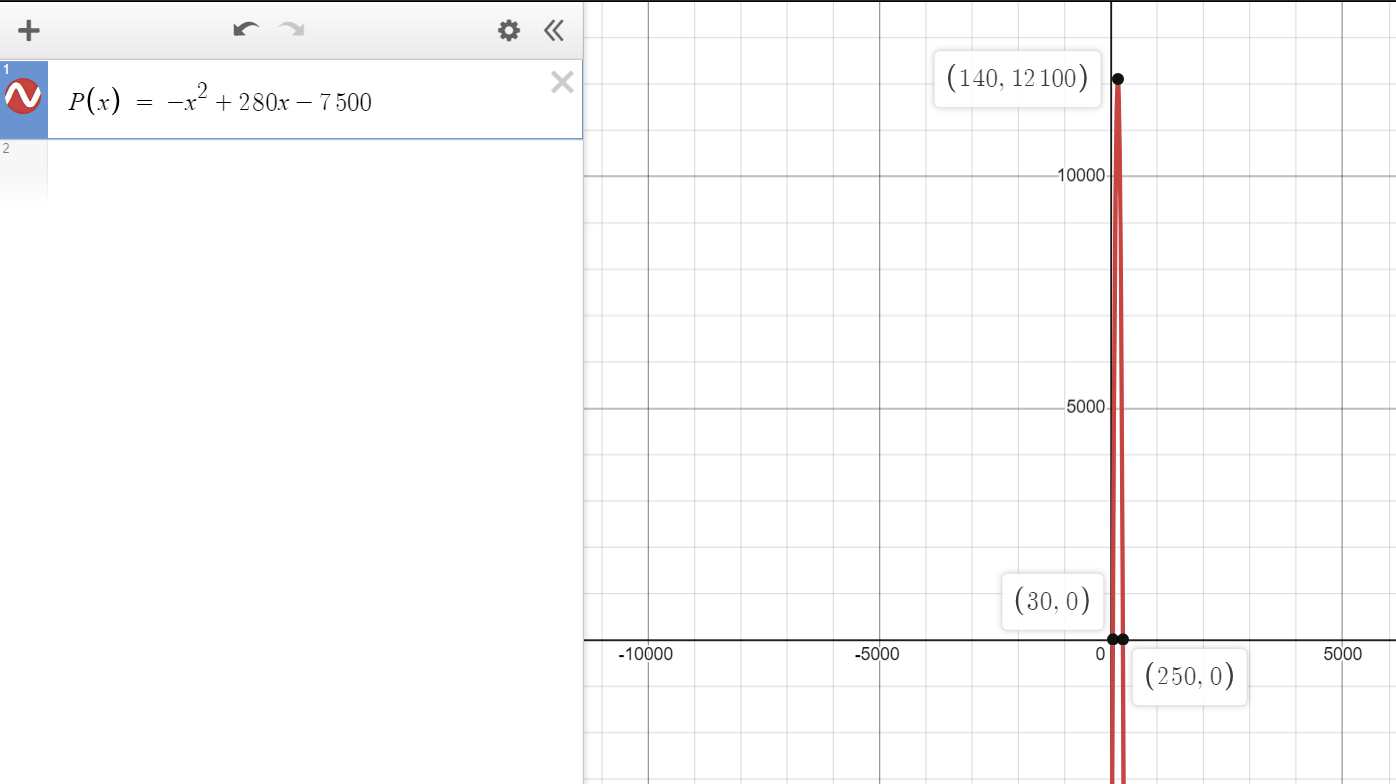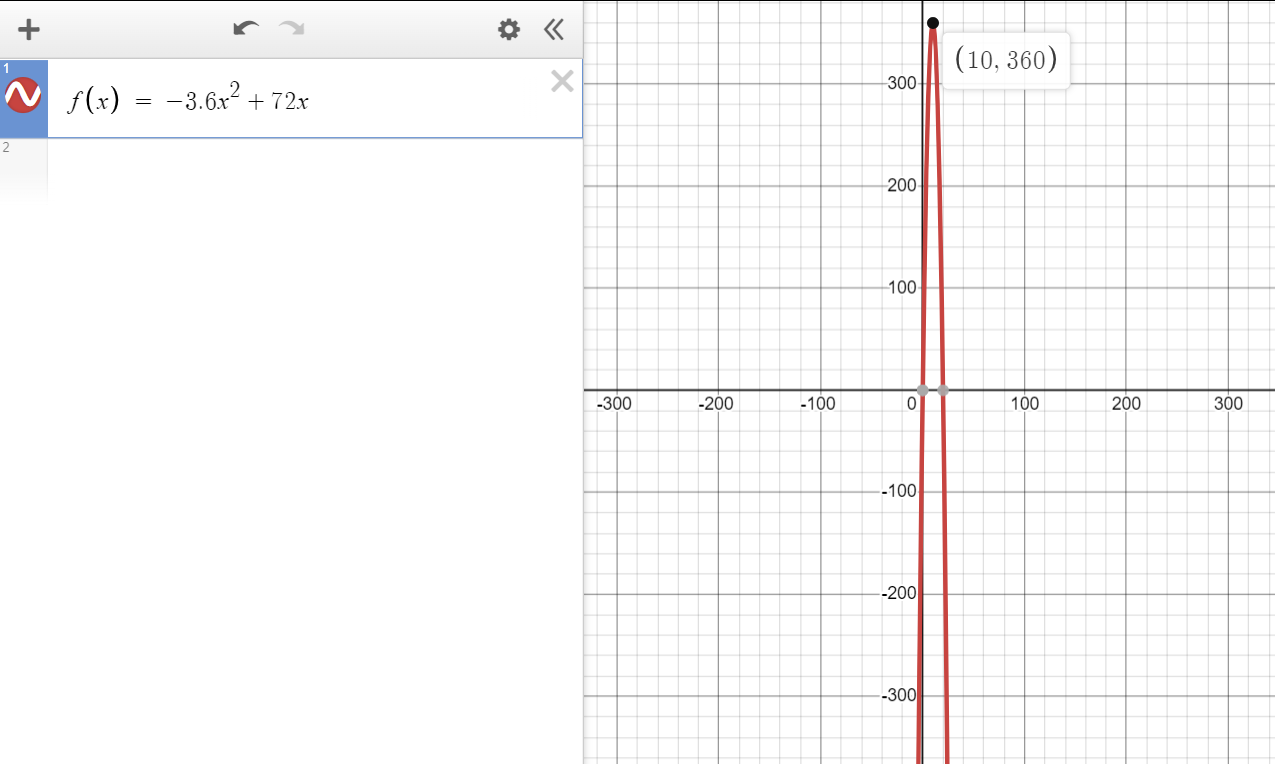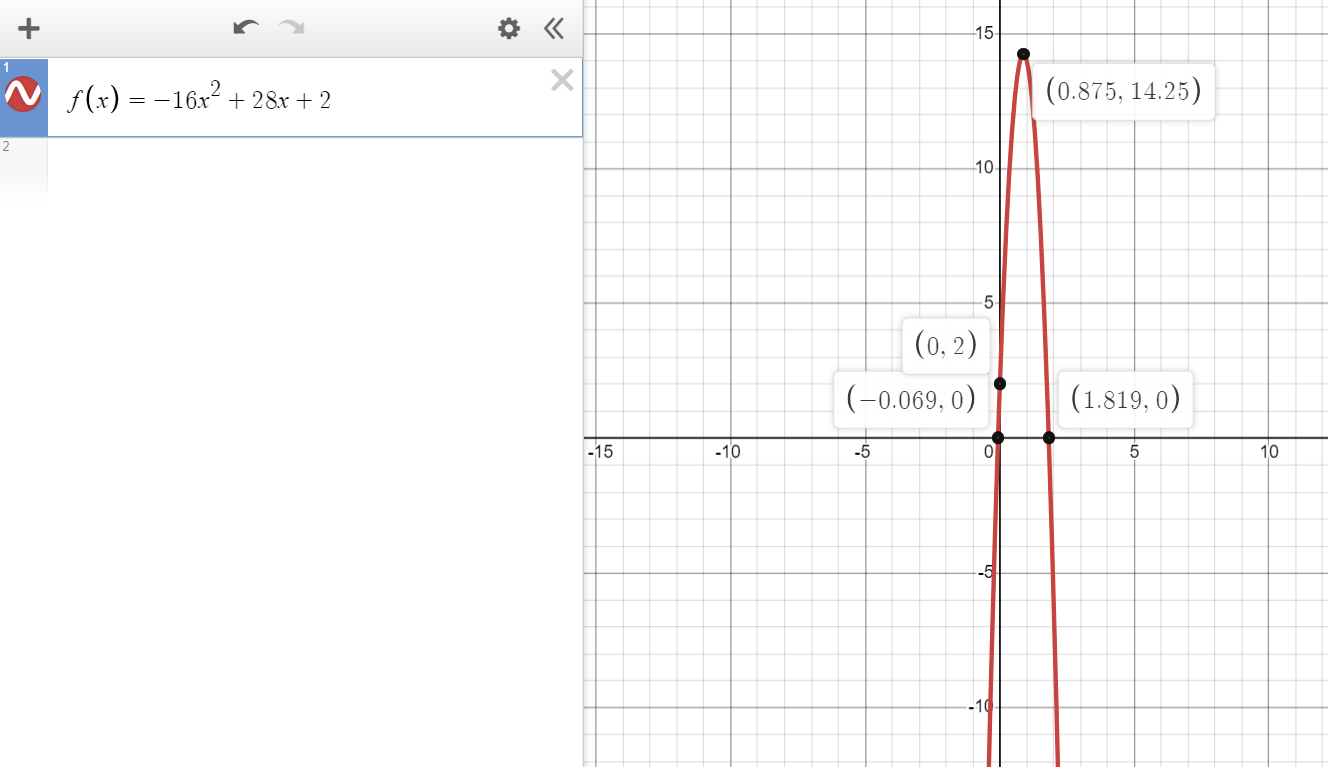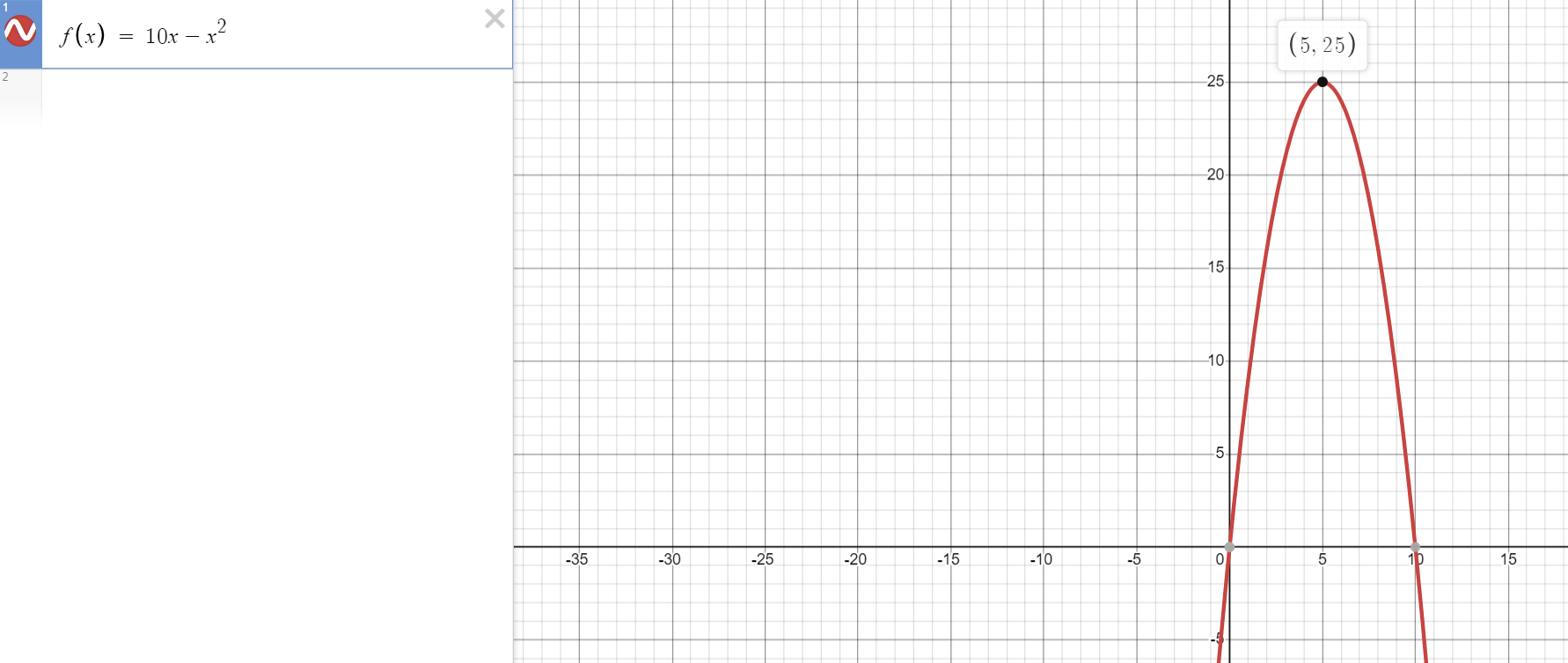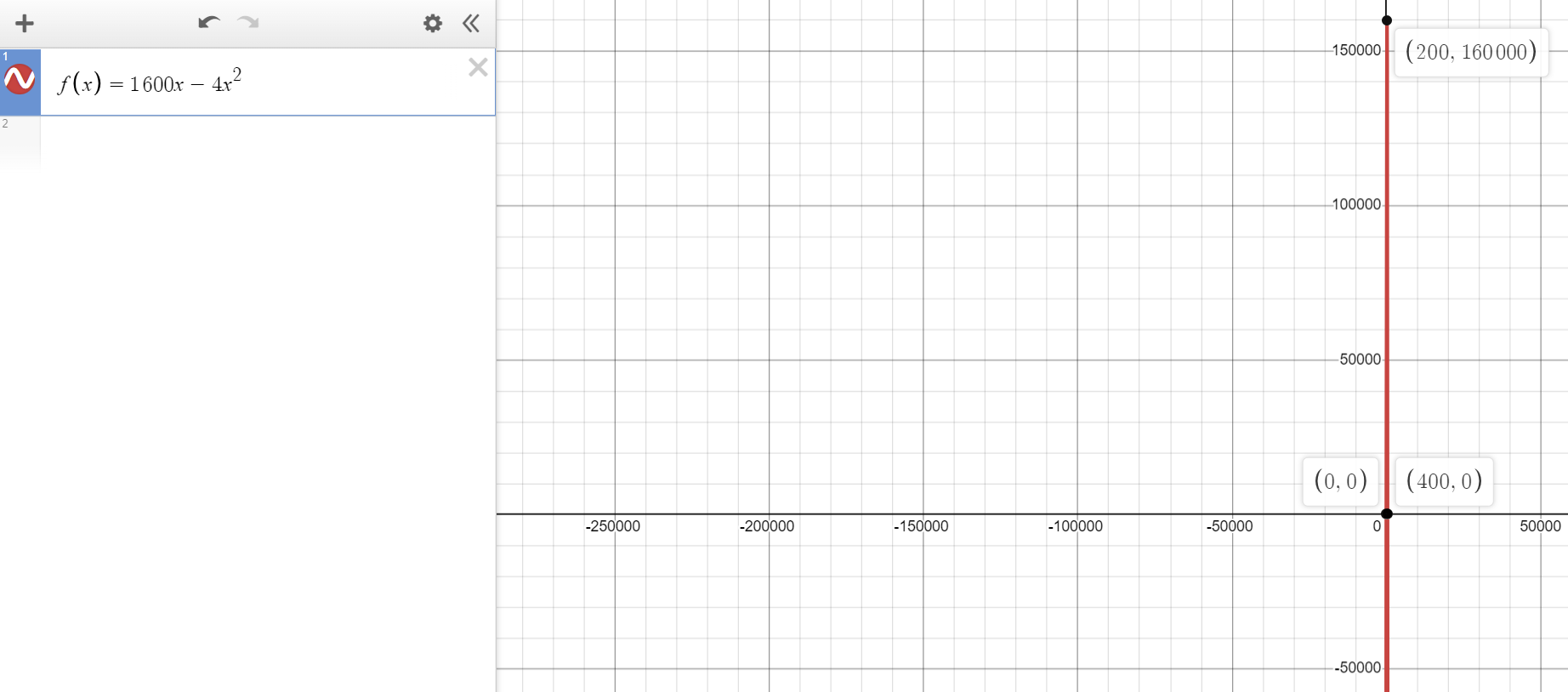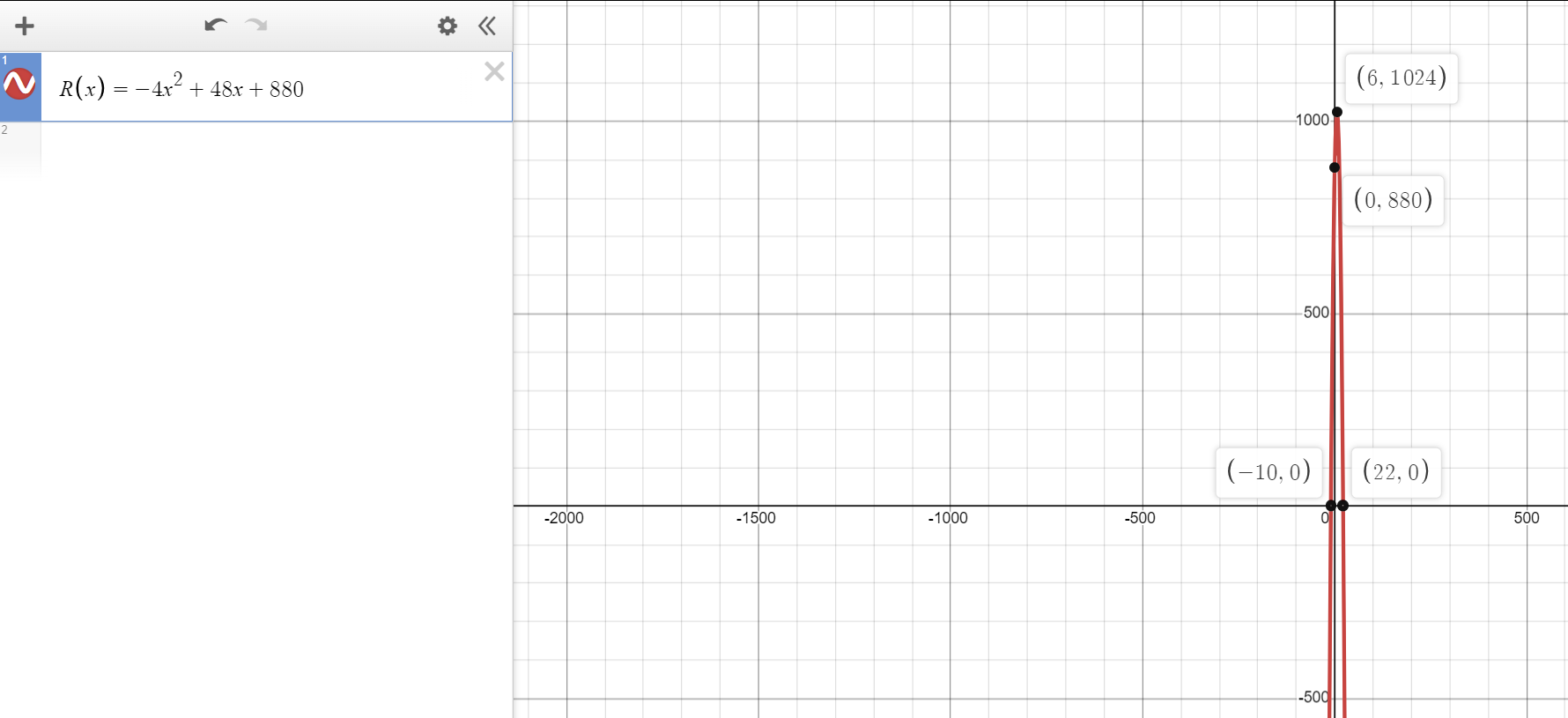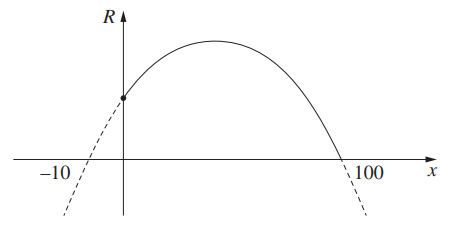. (Hint: $R = xp$)
$
(a.) \\[3ex]
x = -8p + 800 \\[3ex]
R = xp \\[3ex]
R(p) = p(-8p + 800) \\[3ex]
R(p) = -8p^2 + 800p \\[3ex]
$
(b.) The revenue cannot be negative.
The revenue can be zero (no revenue)
The revenue can be positive
Hence, the revenue must be nonnegative
The domain of
R includes all the real number prices such that the revenue is nonnegative
$
R(p) \ge 0 \\[3ex]
-8p^2 + 800p \ge 0 \\[3ex]
-8(p^2 - 100p) \ge 0 \\[3ex]
p^2 - 100p \le \dfrac{0}{-8} \\[5ex]
p^2 - 100p \le 0 \\[3ex]
p(p - 100) \le 0 \\[3ex]
Assume:\;\;p(p - 100) = 0 \\[3ex]
p = 0 \;\;\;OR\;\;\; p - 100 = 0 \\[3ex]
p = 0 \;\;\;OR\;\;\; p = 100 \\[3ex]
Test\;\;Intervals\;\;are: \\[3ex]
p \lt 0 \\[3ex]
0 \le p \le 100 \\[3ex]
p \gt 100 \\[3ex]
$
Let:
|
p < 0
p = −1
|
0 ≤ p ≤ 100
p = 1
|
p > 0
p = 101
|
| $p$ |
− |
+ |
+ |
| $p - 100$ |
− |
− |
+ |
| $p(p - 100)$ |
+ |
− |
+ |
Less than or equal to zero
means nonnegative
Hence, the second test interval gives the solution of the inequality
Domain, D = {p | 0 ≤ p ≤ 100}
(c.) The price that maximizes revenue is the
xx-coordinate of the revenue function.
$
R(p) = -8p^2 + 800p \\[3ex]
Compare:\;\;R(p) = ap^2 + bp + c \\[3ex]
a = -8 \\[3ex]
b = 800 \\[3ex]
x-coordinate\;\;of\;\;vertex = -\dfrac{b}{2a} \\[5ex]
p = \dfrac{-800}{2(-8)} \\[5ex]
= \dfrac{-800}{-16} \\[5ex]
= 50 \\[3ex]
$
The price that maximizes revenue is
$50
(d.) The maximum revenue is the
y-coordinate of the vertex
$
R(p) = -8p^2 + 800p \\[3ex]
p = \$50 \\[3ex]
y-coordinate\;\;of\;\;vertex = R(50) \\[3ex]
R(50) = -8(50)^2 + 800(50) \\[3ex]
= -8(2500) + 40000 \\[3ex]
= -20000 + 40000 \\[3ex]
= 20000 \\[3ex]
$
The maximum revenue is
$20,000
(e.) The number of units sold at this price is the value of
x for which
R =
$20000
$
vertex = (x, y) = (p, R) = (50, 20000) \\[3ex]
R = xp \\[3ex]
xp = R \\[3ex]
x = \dfrac{R}{p} \\[5ex]
x = \dfrac{20000}{50} \\[5ex]
x = 400 \\[3ex]
$
400 units were sold at the price that gave the maximum revenue.
(f.) The graph of the revenue versus price is shown below.
Keep in mind that the vertex is (
p,
R) = (50, 20000)
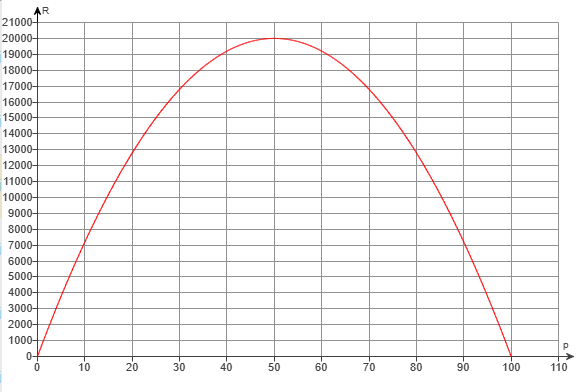
(g.) The price that the company should charge to earn at least
$10,752
At least 10752 means ≥ 10752
They are asking us to determine the price range for which the revenue is greater than or equal to
$10,752
$
-8p^2 + 800p \ge 10752 \\[3ex]
-8p^2 + 800p - 10752 \ge 0 \\[3ex]
-8(p^2 - 100p + 1344) \ge 0 \\[3ex]
p^2 - 100p + 1344 \le \dfrac{0}{-8} \\[5ex]
p^2 - 100p + 1344 \le 0 \\[3ex]
(p - 16)(p - 84) \le 0 \\[3ex]
Assume:\;\;(p - 16)(p - 84) = 0 \\[3ex]
p - 16 = 0 \;\;\;OR\;\;\; p - 84 = 0 \\[3ex]
p = 16 \;\;\;OR\;\;\; p = 84 \\[3ex]
Test\;\;Intervals\;\;are: \\[3ex]
p \lt 16 \\[3ex]
16 \le p \le 84 \\[3ex]
p \gt 84 \\[3ex]
$
Let:
|
p < 16
p = 0
|
16 ≤ p ≤ 84
p = 17
|
p > 84
p = 85
|
| $p - 16$ |
− |
+ |
+ |
| $p - 84$ |
− |
− |
+ |
| $(p - 16)(p - 84)$ |
+ |
− |
+ |
Less than or equal to zero
means nonnegative
Hence, the second test interval gives the solution of the inequality
The solution is: {
p | 16 ≤ p ≤ 84}
The company should a price between a minimum of
$16.00 and a maximum of
$84.00
